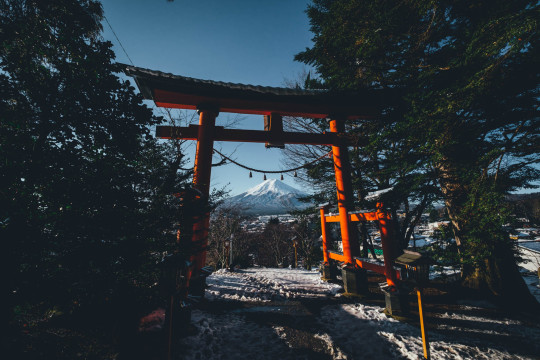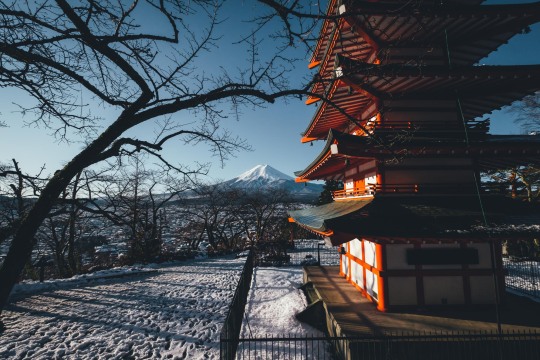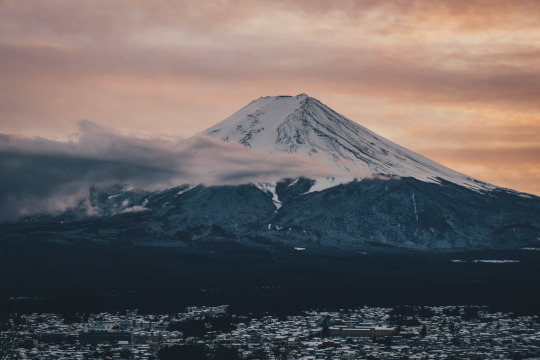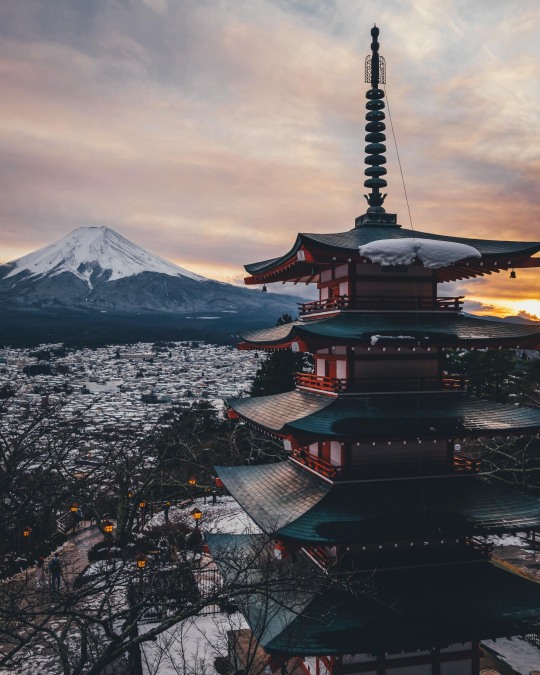Photo
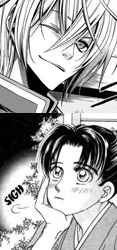
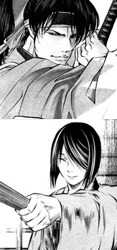


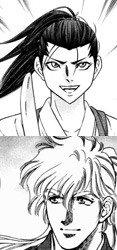
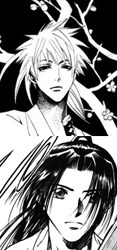

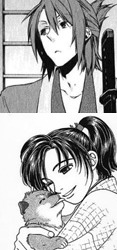
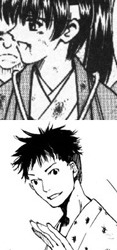
Okita Sōji [沖田 総司]
1. Clockwork ◍ 2. Bakumatsu Seishun Hanafubuki ◍ 3. Getsu Seiki - Sayonara Shinsengumi ◍ 4. Ichi ◍ 5. Shinsengumi Imon Peacemaker / Peacemaker Kurogane ◍ 6. Shinsengumi Jingishou Asagi ◍ 7. Zanbara! ◍ 8. Sidooh ◍ 9. Bakudan! Bakumatsu Danshi ◍ 10. Burai ◍ 11. Kootetsu no Hana ◍ 12. Soshite Haru no Tsuki ◍ 13. Because Goodbyes Are Coming Soon ◍ 14. Strength ◍ 15. Hakuouki ◍ 16. Kaze Hikaru ◍ 17. Rurouni Kenshin ◍ 18. Hinata no Ookami Shinsengumi Kidan
305 notes
·
View notes
Photo
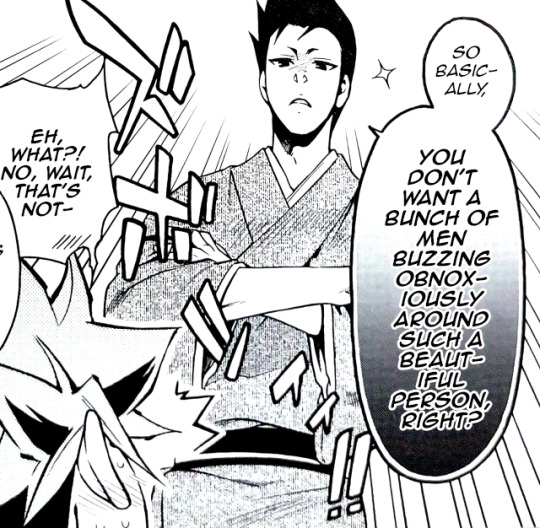
PEACEMAKER KUROGANE OMOU MICHI: BONUS COMIC
READ ONLINE (imgur): Here
A bonus short comic that came with admission during the screening of PMK’s first movie! Thanks to user minareirei for being kind enough to provide the raws!
24 notes
·
View notes
Photo
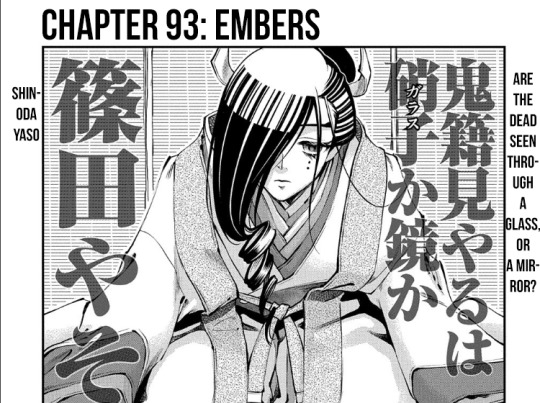
PEACEMAKER KUROGANE CHAPTER 93
DOWNLOAD (mega): Here
READ ONLINE (imgur): Here
Please support Chrono-sensei if you can by buying the manga if it’s released in your country, and enjoy this chapter! Next chapter is slated for release at the end of December!
24 notes
·
View notes
Text
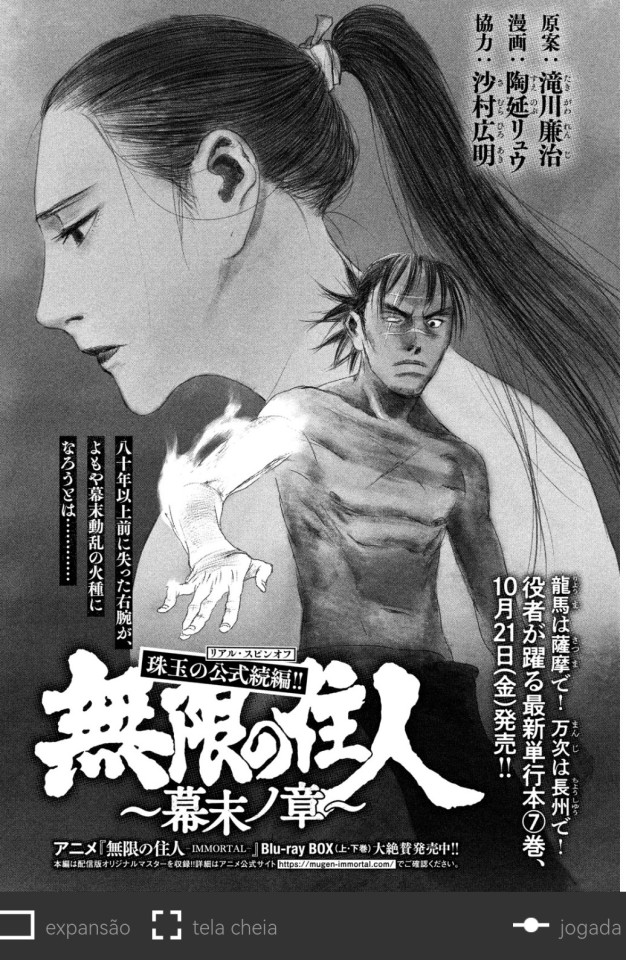
#Manji#Blade of the immortal bakumatsu arc#Mugen no juunin bakumatsu no sho#Okita Souji#Shinsengumi#Blade of the immortal
1 note
·
View note
Photo
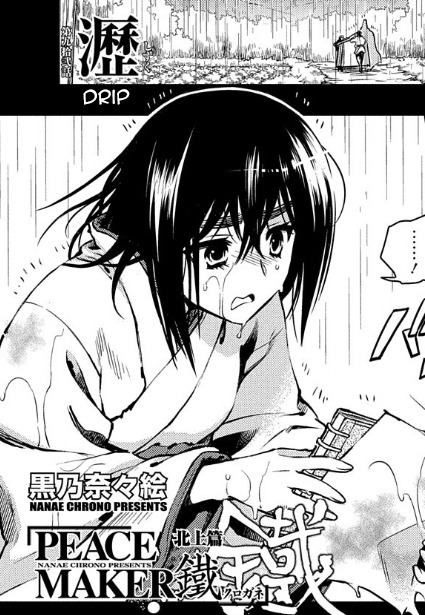
PEACEMAKER KUROGANE CHAPTER 92
DOWNLOAD (mega): Here
READ ONLINE (imgur): Here
As usual, please support Chrono-sensei if you can by buying the manga if it’s released in your country, and enjoy this chapter! Next chapter is slated for release in October!
23 notes
·
View notes
Text
STD festival lmao
Some of my favorite Soji moments from Moeyo Ken.
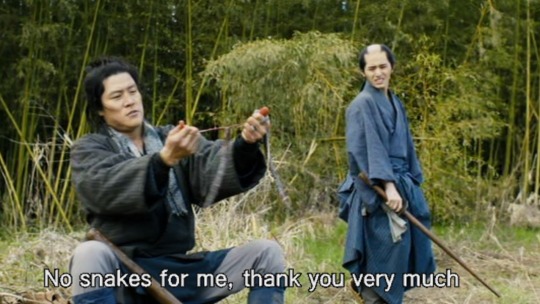
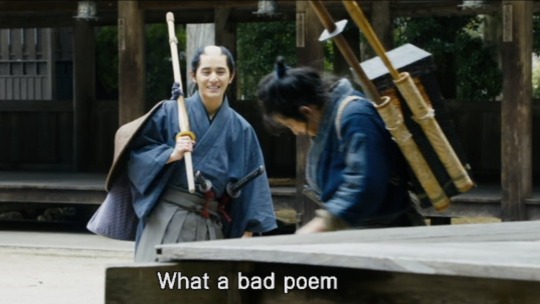
"Thanks for the invite, Hijikata, but I'd rather skip the STD festival."

Having just arrived in Kyoto and settled in the Yagi home, everyone is having their first nice Kyoto dinner and then the camera pans to Soji sitting at the kids' table with the Yagi boys in the background. 😂 (Okay, not actually the kids' table, but that's how it reads in the scene.)

Every time Hijikata turns around, Soji is in his paperwork. (My cats channel this same kind of energy when I'm working on anything.)
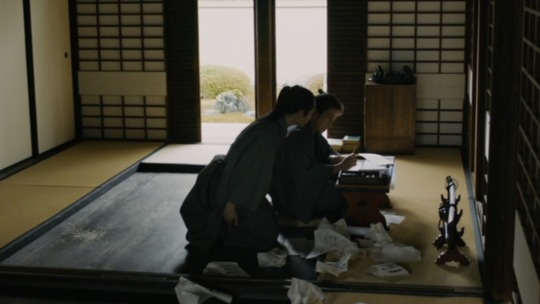

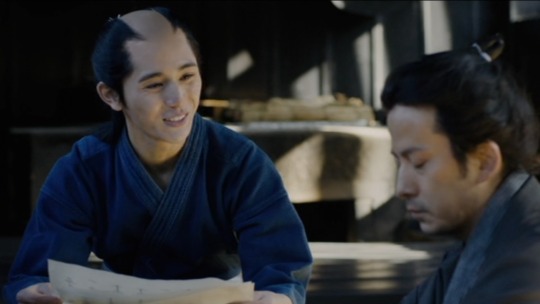

36 notes
·
View notes
Text
This comment under a video about the Shinsengumi.
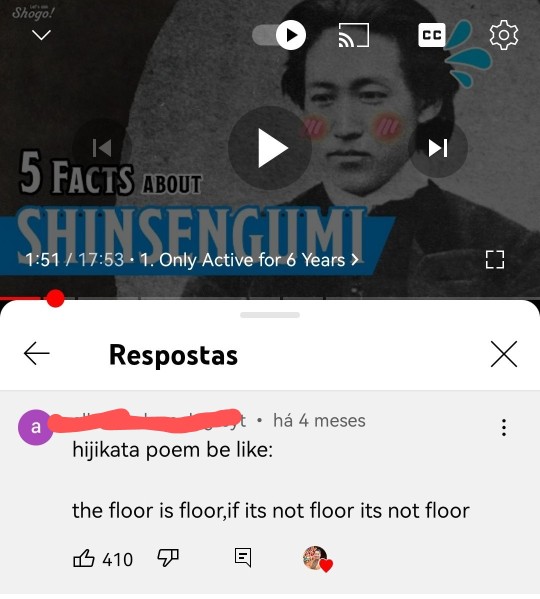
#shinsengumi#hijikata toshizou#kondo isami#okita souji#History#Technically the truth#Lol#Poems#Haiku
30 notes
·
View notes
Photo
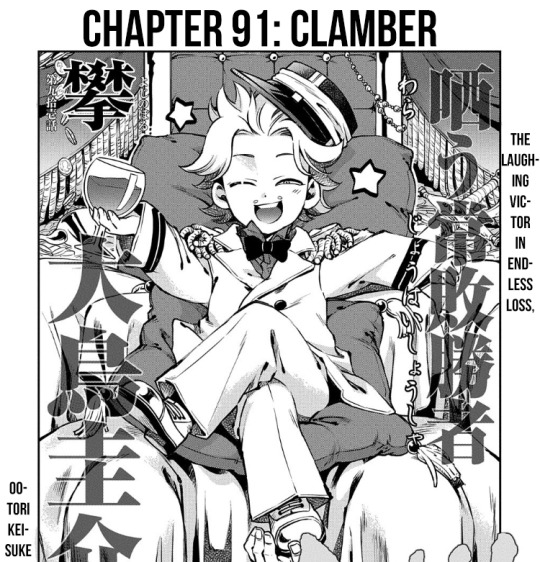
PEACEMAKER KUROGANE CHAPTER 91
DOWNLOAD (mega): Here
READ ONLINE (imgur): Here
Ending a two year hiatus,Nanae Chrono is back with the newest chapter of PMK! Please support Chrono-sensei if you can by buying the manga if it’s released in your country, and enjoy this chapter!
53 notes
·
View notes
Text
The Shinsengumi’s Finances
I’ve previously posted about the The Gold and Silver Expenditure and Receipt Book (金銀出入帳) containing the Shinsengumi’s financial records from the 11th month, 1867 to the 3rd month, 1868.
Here’s a translation of the entire document with commentary from the book 新選組史料集. The original Japanese text is available here. (warning: it’s very long)
Translation
Seventh Month, Year of the Rabbit (1867)
Gold and Silver Expenditure and Receipt Book
(There are seals owned by Miyagawa Ryuji and Ryugenji Temple, but these were stamped later.)
Start
November 28, 1867
20 ryo
Nakamura withdrawal stamped with seal
(Nakamura refers to Nakamura Gendo, the accountant)
December 3
62 ryo 2 bu
Yasutomi withdrawal to pay Fukubayashi
(Yasutomi refers to Yasutomi Saisuke, an investigator)
5th
72 ryo
Same person’s withdrawal for hakama expenses
11th
250 ryo
To Kishijima
(Kishima refers to Kishijima Yoshitaro, a Shogun’s advisor)
11th
100 ryo
Yasutomi withdrawal
50 ryo
Same person
50 ryo
Same person
100 ryo
Same person
December 21
50 ryo
Yasutomi withdrawal
Continuar lendo
8 notes
·
View notes
Text
What firearms did the Shinsengumi use?
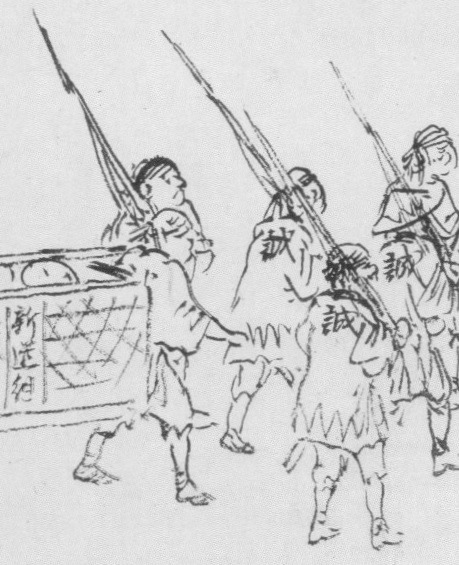
sparrowdreams:
While it’s true that many senior officers in the unit were trained and accredited experts with sword and spear, they fielded firearms of various sizes from the beginning— just think back to Serizawa and his borrowed cannon! Firearms weren’t cheap, but Shinsengumi was either extorting funds or being paid by the shogunate or Aizu domain, so it not only accumulated them, but by late 1864, it was undertaking daily, unitwide drill in artillery and rifle use and tactics. Hijikata is on record as having bragged that the men were getting good at it, too. (Ōishi, Shinsengumi, p. 263) The unit’s preparations for the ultimately canceled deployment to fight in the Chōshū War included appointing Tani Sanjūrō and Tōdō Heisuke as artillery commanders, and Okita Sōji and Nagakura Shinpachi as rifle commanders. There is also an incident from 1866 where the Shinsengumi artillery drill at Nishi-Honganji surprised the temple abbot so much that he turned around and went right back indoors.
Rifles
hogyoku:
In chronological order, first there were matchlock rifles. This has been around for a long time. However, since it shoots by setting fire to the conducting wire, it wouldn’t work when it rained.
At the end of the Edo Period, Gewehr and Minié rifles were imported from overseas.
The Gewehr rifle was the main rifle used by the Shogunate army during the Boshin War. This is a muzzle-loading rifle, which takes longer to reload and shoots less accurately.
However, the Shinsengumi account book indicates that they purchased cutting-edge breechloader (rear-loading) rifles soon after returning to Edo.
三日
一同百両也
元詰鉄炮五丁
3rd day [of the 2nd month, Keio 4]
100 ryo
5 breech-loading rifles
(source: 金銀出入帳)
So the Shinsengumi likely used Gewehr rifles during the Battle of Toba-Fushimi, and used a combination of Gewehr and breech-loading rifles (Snider or Spencer) later on.
In Ezo, Hijikata and his men were said to have used muzzle-loading Enfield rifles.
Gewehr smoothbore rifle

A “Gewehr” smoothbore gun, of the type mostly used by the Shogunate during the Boshin war (1868-69) in Japan. (source: military-history.fandom.com)

source: The Shinsengumi Exhibition
From the Ryozen Museum of History
Imported by Takashima Shuhan, an artillery instructor at the Kobusho (Shogunate military academy). It became the main gun of the Shogunate army. (Kimura)
excite:
From the Bunkyu era, the Shinsengumi began purchasing and training with a new type of rifle (Gewehr rifle). They also test-fired cannons.
hogyoku:
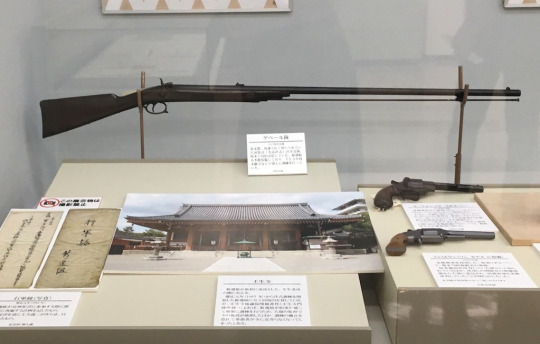
On display was a gun of the same type that was presumably used during artillery training at Mibudera Temple.
It’s clear that the Shinsengumi was involved with Western guns from a very early stage.
(Note: The guns on display are of the same type as those used in that period, not the actual guns used at Mibudera)
bakusin:
(Diameter: 17.5 mm, Length: 1499 mm)
This gun was one of the first Western-style imported guns to become popular. It was a front-loading type, with round ammunition and powder loaded through the muzzle. The accuracy was low, and it is said that the Shogunate army had a hard time against the new government forces because of their heavy use of this gun.
akizane3:
The Gewehr gun is muzzle-loading, so you have to stand up when loading.
On the other hand, since the Snider rifle [used by the new government army] is a breech-loading type, it can be loaded while crouched down…
This difference is obvious, and combined with the loading speed, the Shogunate forces were forced to withdraw.
Minié-type rifle
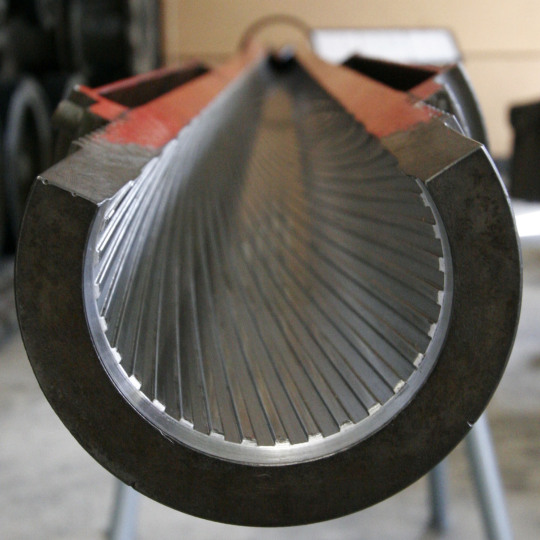
The Gewehr rifle is smooth inside the barrel, while Minié is a category of rifles that have groves inside and special bullets. The Enfield rifle that was popular during the Boshin War belongs to this category.
hogyoku:
At first glance, the Gewehr smoothbore and Minié rifles are so similar that one cannot tell the difference. However, there’s a big difference in accuracy and range.
The difference comes from whether the barrel has rifling or not. Rifling refers to spiral grooves carved on the inside of the barrel. Since the only difference is inside the barrel, they look the same from the outside. However, not all guns with rifling are Minié. A Minié is a gun that uses a barrel with rifling and a special Pritchett bullet (Minié ball). They are called “Minié” (France), “Enfield” (England), “Springfield” (U.S.A.), etc., depending on the country of manufacture.
Advantages of having rifling: The gyroscopic effect is created by the high-speed rotation of the bullet, which stabilizes the trajectory and increases the range and accuracy of the shot. This was invented in the mid-18th century. The gyroscopic effect refers to the ability of an object rotating at high speed to maintain a straight posture. It’s the same principle preventing a spinning top or a running bicycle from falling over.
Disadvantages of having rifling: It’s technically difficult to apply rifling evenly inside the barrel, making mass production difficult. Because of the uneven rifling inside the body, it’s said that muzzle-loading rifles took more than twice as long to load as smoothbore rifles because the bullet kept getting caught on the rifling. For this reason, these rifles were used only for very limited purposes such as sniping for more than 100 years after their invention.
The invention of the Minié rifle solved this problem.
A machine to engrave rifling was invented and mass production became possible.
Making a bullet smaller than the muzzle would prevent it from getting caught on the rifling when loading. However, if the bullet is simply made smaller, there will be a gap between the bullet and the rifling. This can reduce the power and range of the gun.
To solve this problem, when the rifle was fired, the expanding gas would push forcibly on the base of the bullet, deforming the skirt to provide a better seal to engage the rifling. This is called a Pritchett bullet (Minié ball).
However, because bullets fall out when the muzzle is pointed down, it needs to be loaded and carried vertically. The cartridge-type breech-loading gun is more powerful and quicker to load.
The Minié rifle was a powerful but difficult to use rifle that quickly became popular, but it was only used for about 15 years.
Enfield rifle

source: Wikipedia
The Enfield Pattern 1853 rifle-musket was a .577 calibre Minié-type muzzle-loading rifled musket. In Japan, it was imported in large numbers at the end of the Edo period and was the main rifle of the new government forces during the Boshin War.
excite:
During the Battle of Hakodate, Hijikata Toshizo and his men used muzzle-loading Enfield rifles. In contrast, the new government forces used breech-loading Snider rifles.
Enfield rifle: Firing rate 20-30 seconds per shot. Effective range 900m
Snider rifle: Firing rate 6 seconds per shot. Effective range 900m
Snider rifle
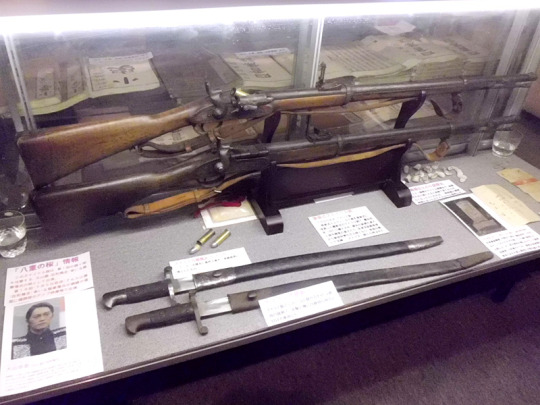
source: kazusa
The New Government Army used this type of rifle in the Boshin War and the Battle of Hakodate. It might have also been used by the Shinsengumi after returning to Edo.
hogyoku:
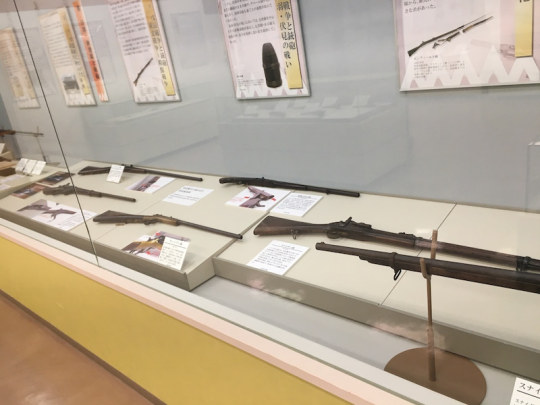
In the forefront is a Snider rifle. This is an breech-loading rifle.
Toshizo-san once said, “Even the Hino Farmers’ Corps should be introduced to the breech-loading system.” As you can see in the photo below, it is possible to insert a bullet integrated with a shell casing while the gun is held horizontally.
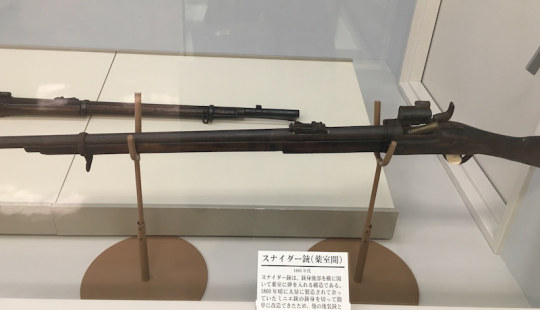
With the earlier muzzle-loaded type, you had to stand up, hold the barrel vertically, and insert it with a tap, which took time and left you vulnerable during loading. During the Battle of Toba-Fushimi, for example, the enemy shot at the Shogunate forces more often while they were reloading bullets in that way.
This advice was given by Toshizo, who had experienced it firsthand, and it carries even more weight when you consider that he was giving it for the sake of his beloved hometown.
bakusin:
(Diameter: 14.7mm, Length: 1375mm)
This is an improved version of the Enfield rifle with a breech-loading system. It’s a revolutionary improvement for soldiers on the battlefield, as it can be operated while laying down.
Spencer repeating rifle

source: aizumonogatari
This was a breech-loading rifle frequently used by Yamamoto Yae, but it was probably not widespread during the Boshin War, so the average soldier wouldn’t have had one.
wikipedia:
The Spencer showed itself to be very reliable under combat conditions, with a sustainable rate-of-fire in excess of 20 rounds per minute. Compared to single-shot muzzle-loaders, with a rate of fire of 2–3 rounds per minute, this represented a significant tactical advantage. However, effective tactics had yet to be developed to take advantage of the higher rate of fire. Similarly, the supply chain was not well prepared enough to transport the extra ammunition. Detractors also complained that the amount of smoke produced was such that it was hard to see the enemy, which was not surprising since even the smoke produced by muzzleloaders would quickly blind whole regiments, and even divisions as if they were standing in thick fog, especially on still days.
One of the advantages of the Spencer was that its ammunition was waterproof and hardy, and could stand the constant jostling of long storage on the march.
Pistols

source: The Shinsengumi Exhibition
Kondo Isami’s pistol

source: ADEAC
From the Shinsengumi Sato Hikogoro Museum
This is a percussion cap pistol. It was discovered in 2005. At first, it was unknown who it belonged to, but a copy of the gun’s notification certificate (dated February 12, 1867) was found in the ancient documents, and it turned out that Kondo Isami gave it to Sato Hikogoro in the first year of Bunkyu.
Hijikata’s pistol
hogyoku:
Toshizo’s portrait taken during the Hakodate War shows him wearing western clothes and carrying a pistol case on his right hip, as weapons and supplies were coming in from the ports after the American Civil War. This photo shows Toshizo’s pragmatism, always quick to adopt anything new and beneficial.
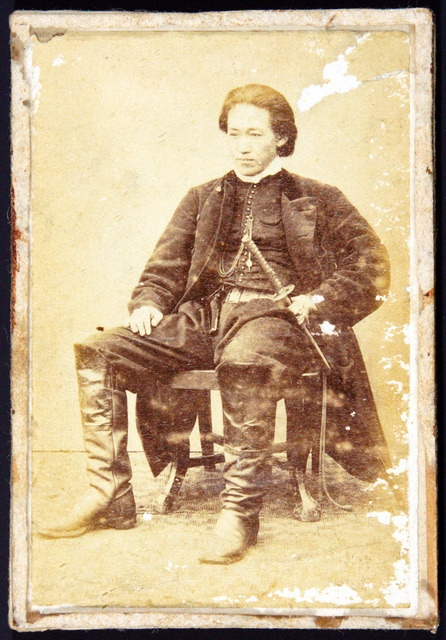
I asked the curator who planned the exhibition, “Can you guess what kind of pistol was in the pistol case in Toshizo’s photo?”
The answer is that there are two possibilities.
The first is Smith & Wesson, which is famous for being owned by Sakamoto Ryoma.
Many of them were also found on the Kaiyo Maru, so it’s assumed that they were also used by the infantrymen of the Tokugawa army, so it is only natural that Toshizo, an executive, would possess them.

The second possibility is Lefaucheux, which uses a pinfire cartridge .
This type of pistol is listed in the large amount of weapons given to the Tokugawa Shogunate by Napoleon III, and since it was a major weapon on the Shogunate side, it wouldn’t be strange for Toshizo possess it after working with the Shogunate officials and French military officers.
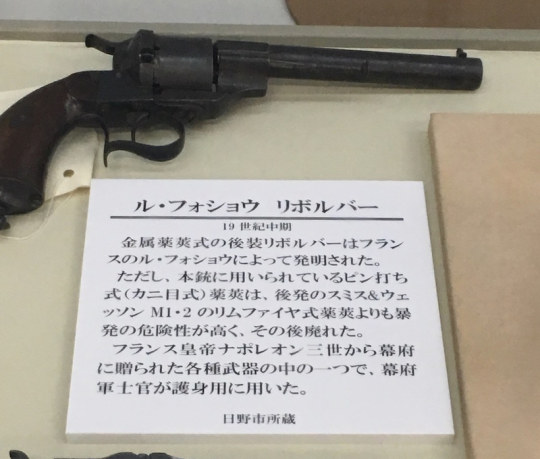
However, the standard Lefaucheux is quite large, so judging from the size of the pistol case in Toshizo’s photo, I think it was the compact version.
A photo of the pistol divided in two to show the structure of the contents:
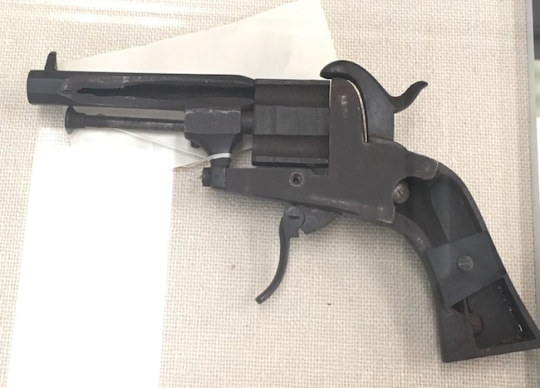
Looking at the actual gun, I can imagine what it looked like on Toshizo when the photo was taken.
It’s amazing how much information a single photo can contain. That’s why old photos are so interesting.
Though the image of Hijikata Toshizo running into the enemy with a Japanese sword until the very end is pervasive, he actually adopted Western firearms and other weapons early on, and rapidly changed his fighting style. He was a progressive man with an appetite for new things.
Additional Resources
http://www.bakusin.com/gun1.html - list of firearms from the Bakumatsu
https://ameblo.jp/hogyoku/entry-12414783049.html - Hijikata Toshizo Museum’s blog post about the Shinsengumi’s firearms
https://kazusa.jpn.org/b/archives/1891 - Yamamoto Yae’s rifles
http://akizane3.blog.fc2.com/blog-entry-116.html - exhibition of firearms from the Bakumatsu
https://www.excite.co.jp/news/article/Japaaan_159151/?p=2 - Hijikata’s strategies at the Battle of Hakodate where he was outnumbered and outgunned
http://tokyosuicatree.web.fc2.com/nanukamachi.html - photos of firearms from the Aizu Shinsengumi Memorial Hall
36 notes
·
View notes
Text
Kyoto Shinsengumi Pilgrimage: Koenji

It’s my third month here in Japan, and I put aside a week to travel to Kyoto to visit some of the historical Shinsengumi sites. I managed to make it to 5 sights~ I’ll separate them in different posts, but this is my first stop: Koenji
(Gonna write Yamanami instead of Sannan for this post since that’s what the temple keeper referred to him as)
This is supposed to be the grave site of Yamanami Keisuke and some other Shinsengumi. The temple keeper also said that this is where Okita Souji’s girlfriend is buried.
Keep reading
41 notes
·
View notes
Text
The Gold and Silver Expenditure and Receipt Book (金銀出入帳)
The “Gold and Silver Expenditure and Receipt Book” is a record of the Shinsengumi’s receipts and disbursements, covering the period from the 14th day of the 11th month, Keio 3 (1867) to the 1st day of the 3rd month, Keio 4 (1868). It is approximately ten pages in length and is written in a unique ink script. This record is thought to have been written down by Shinsengumi accountants, and is one of the most valuable official documents of the Shinsengumi for understanding their exact activities and financial situation.
A portion of this document was once published in “Shinsengumi Shimatsuki” (written by Shimozawa Kan in 1928). Until around 1937, it was in the possession of Kondo Isami’s relative, Miyagawa Takashi, who lived in Kamiishihara, Chofu, Tokyo. It’s now kept at Ryugenji Temple (6-chome, Osawa, Mitaka, Tokyo), the site of Kondo Isami’s tomb, along with many other related documents once owned by the Miyagawa family.
The first part of this document is marked with “Start”. It then describes the movement of money within the accounting division, and the four people whose names appear in the document, Yasutomi Saisuke, Kishijima Yoshitaro, Otani Isao, and Nakamura Gendo are of course Shinsengumi accountants.
The accountants were usually in charge of bookkeeping, but in times of war, such as the Battle of Toba-Fushimi, they were also assigned to the the logistics division (konida). Yasutomi and Kishijima worked as investigators (諸士調役) (also called “metsuke”), while Otani and Nakamura were treated as the same level as corporals. Some records refer to Otani as an accountant and Nakamura as an equivalent of an accountant.
(source: 新選組史料集)
Out of all the historical texts in 新選組史料集, the Shinsengumi’s account book seemed the most interesting to me, and I kept seeing quotes from it in the articles I’ve read.
It took a while to make sense of the archaic terms and Edo period accounting notation, but I think I’ve mostly figured it out. I’ll post the translation soon, but for now, here are my translation notes and the full original text.
Translation Notes
一金…也 = formal notation used to clarify and confirm that the money will indeed be paid. Ignore this when translating. (source)
也 = classical modal particle used at the end of sentences to express an explanation or judgement. Ignore this when translating. (source)
右 = classical term of respect. Ignore this when translating. (source)
ニて (にて) = indicates the location where something took place. Ignore this when translating.
江 = river? (not sure why it’s added to some of the entries, but make more sense to ignore this when translating)
同 = same
一同…也 = 一金…也
同人 = same person as the previous entry
両 = ryo (see: how much was 1 ryo worth?)
分 = bu (¼ of a ryo)
朱 = shu (1/16 of a ryo)
代 = fee
渡 = transfer to
相渡 = transferring from one party to another
手宛 = salary
地役 = easement (the right to use someone else’s land for a specific purpose) (source)
入用 = necessary uses
御用 = official duties
帰ル = returned
拾 = ten
廿 = twenty
卯 = year of the rabbit (1867 in this case)
正月 = first month
極月 = twelfth month
一件 = incident
候 or 候事 = the state of things. Ignore when translating.
Original Text
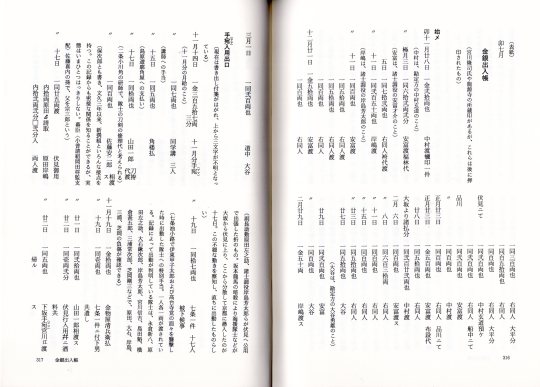


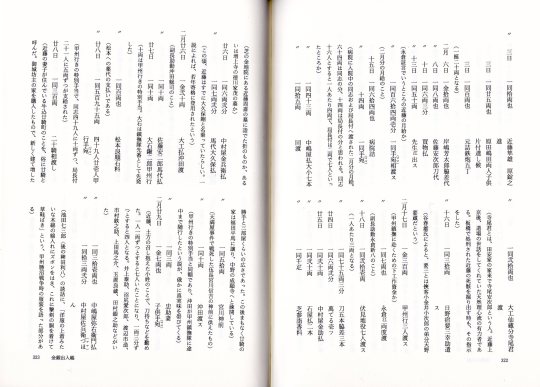
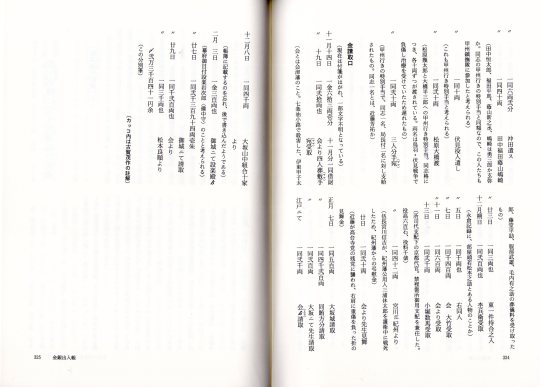
Simplified Text
卯七月
金銀出入帳
(宮川隆司氏や龍源寺の所蔵印があるが、これらは後に押印されたもの)
始メ
卯十一月二十八日
二十両
中村渡蠟印一件
(中村は、勘定方の中村玄道のこと)
十二月三日
六十二両二分
安富渡福林代
(安富は、諸士調役の安富才介のこと)
五日
七十二両
同人袴代渡
十一日
二百五十両
岸嶋渡
(岸嶋は、諸士調役の岸島芳太郎のこと)
十一日
百両
安富渡
五十両
同人渡
五十両
同人渡
Continuar lendo
74 notes
·
View notes
Note
When did the shinsengumi start wearing western uniforms?
That would be on Pants Day 😂
On March 22, 1868, the Shinsengumi spent 13 ryō 2 bu on pants from Nakamuraya Sahei. A few days before, on March 17, they spent 6 ryo 2 bu on jackets.
nachtic:
Purchased jackets on March 17, 1868 (6 ryo 2 bu)
Purchased pants on March 22, 1868 (13 ryo 2 bu)
According to one theory, the price of 1 ryo at the end of the Edo period, converted from the price of rice, was said to be around 3000-4000 yen, so the jackets would be about 20000 yen and pants about 40000 yen.
For comparison, the price of a school uniform now is around 30000 yen.
The only artifact I could find is Nagakura's waistcoat:
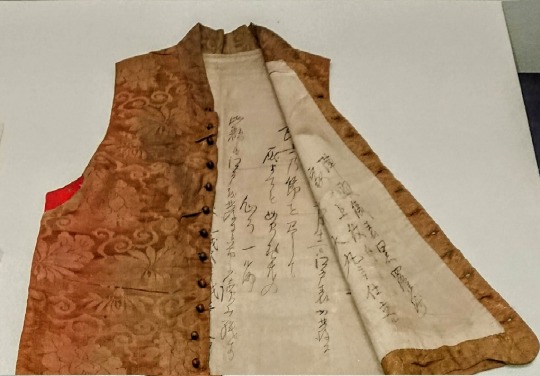

This should be similar to what Hijikata wore under his jacket in his photo:

There’s also a description of their western uniform in the book 新選組聞書:
They were wearing a cotton-padded coat as their Western jacket, trousers, straw sandals, and a white cotton obi belt with a sword attached to it. I remember they wore a white cotton headband.
(source)
The “cotton obi belt” might have looked like this:
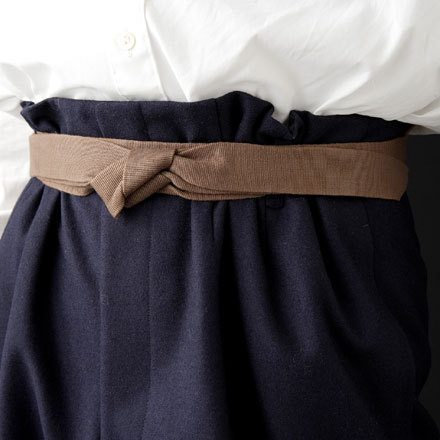
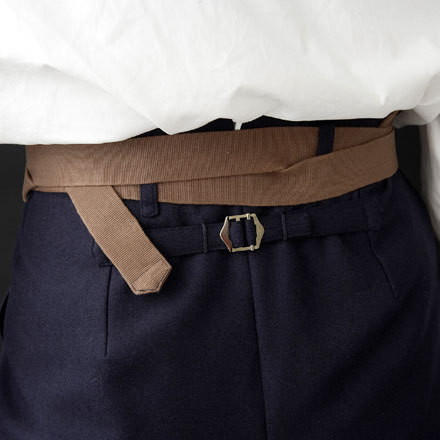
hijikatatoshizo.com:
Back then, suspenders were commonly used for trousers, but it’s said that many people wore an obi instead, because they “couldn’t tighten their stomachs”.
More photos from hijikatatoshizo.com (a store that specializes on Hijikata’s uniform):

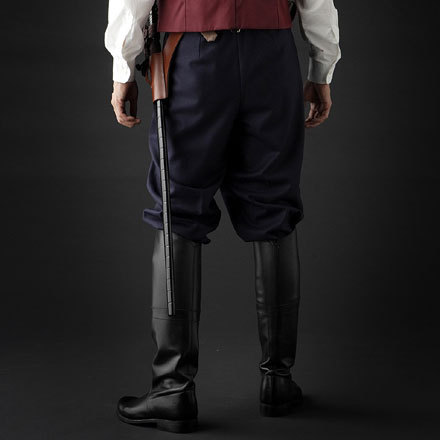
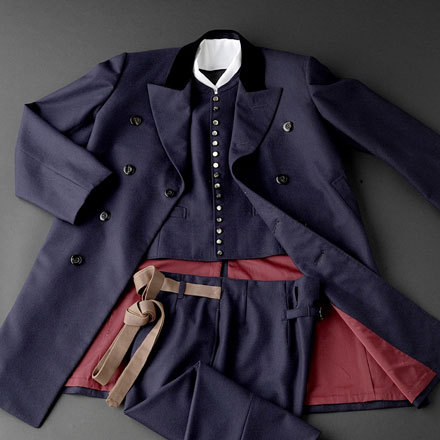
46 notes
·
View notes
Photo
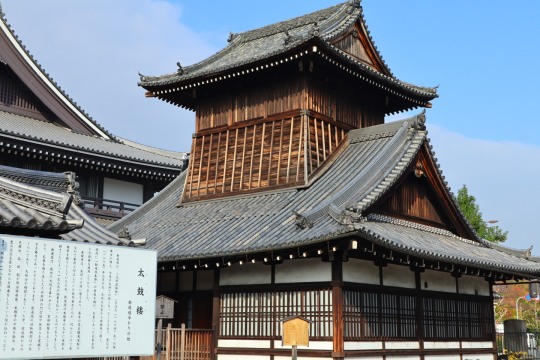

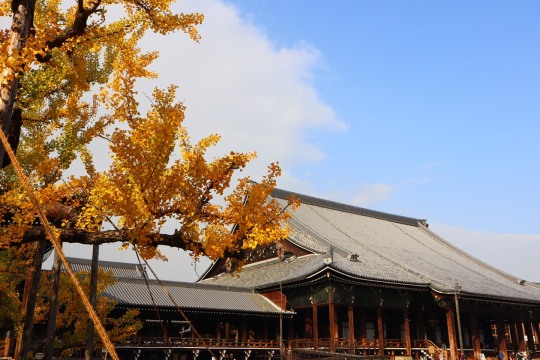
Nishi-Honganji Temple (西本願寺太鼓楼)
After the Ikedaya Incident, the Shinsengumi began to exceed 200 members and moved their headquarters from Mibu to Nishi-Honganji. Don’t forget that it was the headquarters of Shinsengumi when you go to Nishi-Honganji, a World Heritage Site
19 notes
·
View notes
Photo

Map of Shinsengumi-related sites in Kyoto
14 notes
·
View notes
Photo
As much as I love the pic I dare to say, according to his physical description he would be somewhat different. 😂
Besides never being described as "handsome" . 😋
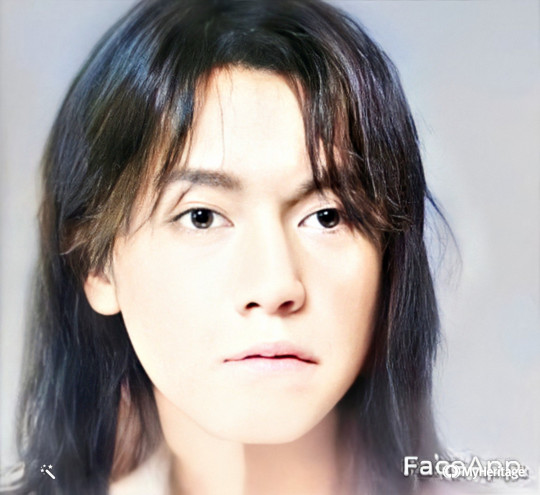

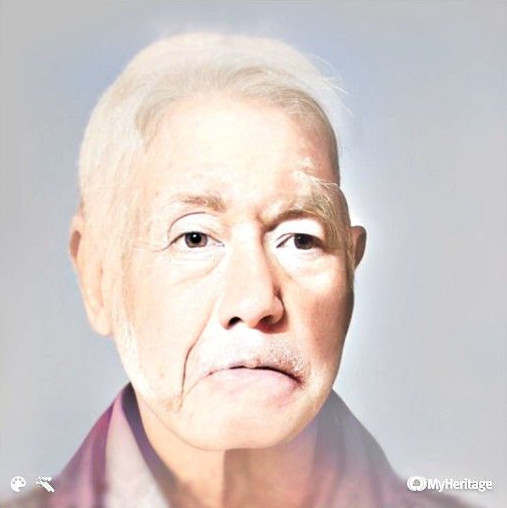
What Okita might have looked like, based on his uncle
Yesterday, I posted the photo of Okita’s uncle, Miyahara Kyugoro.
After playing around with Faceapp, I got some photos of how he looked when he was younger with long hair.
This must be Okita from Peacemaker Kurogane in real life 😂

15 notes
·
View notes

